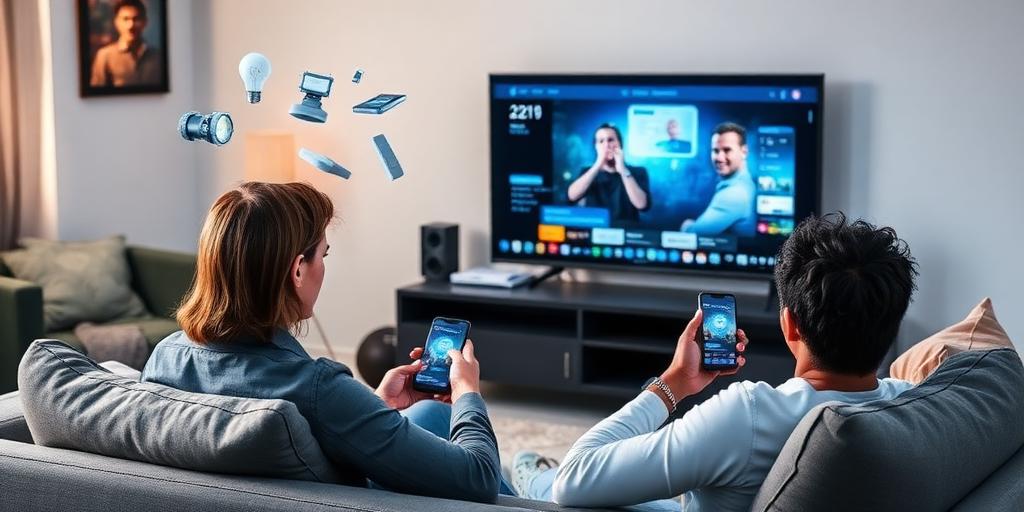Second Screen Experiences: Still Relevant in 2025?
The concept of the “second screen experience” – using a secondary device like a smartphone or tablet while watching TV – gained considerable traction in the early 2010s. But as we approach 2025, it’s crucial to examine whether this phenomenon remains relevant or has evolved into something different.
What Exactly is a Second Screen Experience?
At its core, a second screen experience involves using a mobile device to interact with or enhance the content being consumed on a primary screen, typically a television. This interaction can take many forms, including:
- Information Retrieval: Looking up actors, directors, or other details about a show or movie.
- Social Interaction: Sharing thoughts and opinions about what you’re watching on social media platforms.
- Interactive Content: Participating in polls, quizzes, or games related to the program.
- Enhanced Viewing: Accessing bonus content, behind-the-scenes footage, or alternate camera angles.
- E-commerce: Purchasing products featured in the show or movie.
The Rise and Fall (and Potential Rise Again?) of Second Screen Apps
Initially, many media companies and broadcasters invested heavily in developing dedicated second screen apps. These apps aimed to provide a seamless and integrated experience, offering a range of features designed to complement the TV viewing experience. However, many of these apps failed to gain widespread adoption. Several factors contributed to this, including:
- App Fatigue: Users were hesitant to download and use a separate app for every show they watched.
- Fragmentation: The lack of a standardized platform made it difficult for developers to create compelling and consistent experiences.
- Limited Functionality: Many apps offered little more than basic information or social sharing features.
The Evolution of Second Screen Behavior
While dedicated second screen apps may have struggled, the underlying behavior of using a second device while watching TV persists. However, it has evolved and become more integrated into existing platforms and habits. Instead of relying on specific apps, users now leverage a wider range of tools and services, including:
- Social Media: Platforms like Twitter and Facebook remain popular for real-time commentary and discussion about TV shows and live events.
- Search Engines: Looking up information about actors, plot points, or related topics is still a common activity.
- Messaging Apps: Sharing reactions and opinions with friends and family via text or messaging apps.
- Streaming Platform Features: Many streaming services now incorporate interactive elements, such as polls, quizzes, and behind-the-scenes content, directly into their platforms.
Second Screen Experiences in 2025: What to Expect
Looking ahead to 2025, the second screen experience is likely to become even more integrated and seamless. Here are some key trends to watch for:
- AI-Powered Personalization: AI algorithms will be used to personalize the second screen experience based on individual viewing habits and preferences.
- Augmented Reality (AR) Integration: AR technology could be used to overlay interactive elements onto the TV screen, creating a more immersive experience.
- Voice Control: Voice assistants will play a larger role in controlling and interacting with both the TV and the second screen device.
- Seamless Device Integration: Devices will be able to communicate with each other more seamlessly, allowing for a more fluid and intuitive experience.
- Focus on Community: Platforms will prioritize building communities around specific shows and genres, fostering a sense of shared experience.
Conclusion
While the concept of dedicated second screen apps may have faded, the underlying behavior of using a secondary device to enhance the TV viewing experience remains highly relevant. As technology continues to evolve, we can expect to see even more innovative and integrated second screen experiences emerge in the years to come. The key will be to focus on providing value to the user, whether it’s through personalized content, interactive features, or a sense of community. The future of the second screen is not about forcing users to download yet another app, but about seamlessly integrating into their existing habits and preferences.
